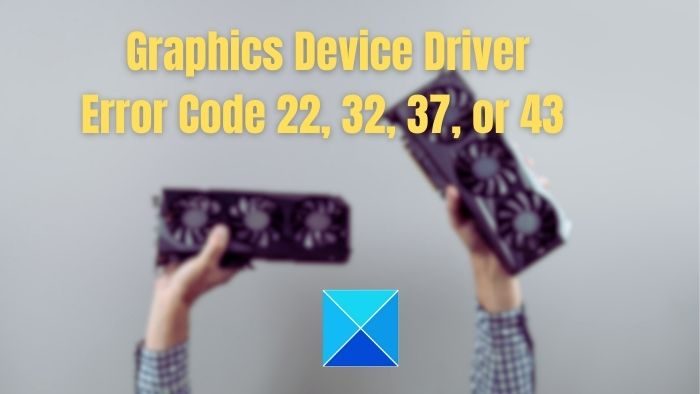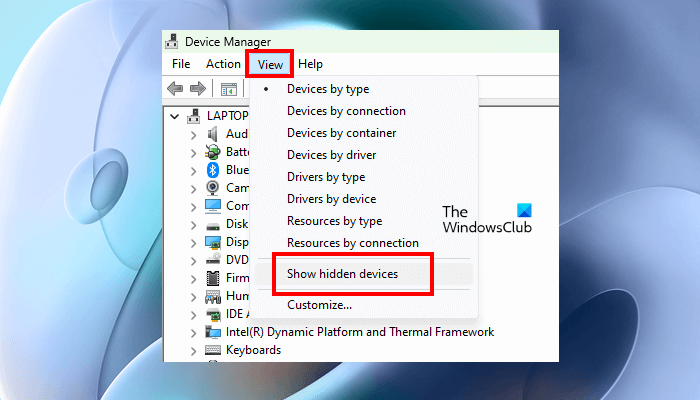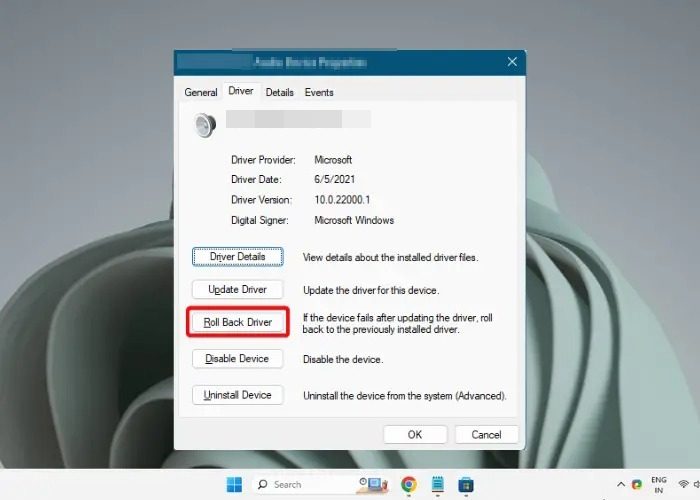Few computer issues are as frustrating as a graphics device driver error. You’re trying to game, edit a video, or watch a movie when suddenly, your screen freezes, your system crashes, or the graphics don’t look right. Error codes like 22, 32, 37, and 43 may crop up. But what do they mean, and how can they be fixed?

Understanding Error Codes 22, 32, 37, and 43
- Error Code 22 indicates that a device is disabled. This could be due to manual disabling, or Windows may have disabled it due to a lack of resources.
- Error Code 32 is triggered when a driver (or device) is disabled in the Registry. The entire error message goes as— A driver (service) for this device has been disabled. An alternate driver may be providing this functionality.
- Error Code 37 arises when the system fails to initialize a device driver. The driver returned a failure when it executed the DriverEntry routine.
- Error Code 43 represents a generic message that a device driver has stopped responding, typically due to hardware issues or driver failures. If it’s the driver failure, it’s because one of the drivers controlling the device notified the operating system that it failed somehow.
Before diving into the specifics of each of these Device Manager error codes, it’s worth noting that many problems can be avoided by keeping device drivers updated, regularly checking your system for software compatibility issues, and running system scans to detect and fix problems early.
How to Fix Graphics Device Driver Error Code 22
To resolve Error Code 22, you need to enable the device in question. Access the Device Manager, find the device marked with Error 22, right-click, and select ‘Enable.’ Windows will automatically find the OEM driver or use a generic driver.

However, if you cannot find the device, click View > Show hidden devices and enable it.
How to Fix Graphics Device Driver Error Code 32
Fixing Error Code 32 requires you to update or reinstall the device driver. Locate the device in Device Manager, right-click, and select ‘Update Driver.’ If that doesn’t work, select ‘Uninstall Device,’ restart your PC, and the driver should automatically reinstall upon startup.
- Open Device Manager
- Right-click the device in the list.
- Select Uninstall from the menu that appears.
- After the device is uninstalled, choose Action on the menu bar.
- Select Scan for hardware changes to first detect and then reinstall the driver.
How to Fix Graphics Device Driver Error Code 37

For Error Code 37, similar to 32, reinstalling the driver often solves the problem. If these steps fail, try to roll back the driver to a previous version or even perform a system restore to a point before the error occurred. Follow the same steps as mentioned in Error Code 32.
How to Fix Graphics Device Driver Error Code 43
In the case of Error Code 43, try restarting your computer first, as this often clears the error. If the problem persists, you must manually reinstall the device driver. Follow the same steps as mentioned in Error Code 32.
Conclusion
Graphics device driver errors like 22, 32, 37, and 43 can cause significant inconvenience, but they can be fixed. The post shares details about each error and suggests solutions that will help you resolve the issue.
Read: There is a problem with your graphics card error on AMD and NVIDIA graphics
How do I restore my graphics driver?
Windows doesn’t maintain a copy of the graphics driver, but if you perform a system restore to a point where it was working, it will roll back to that driver copy allowing it to fix the issue. The best way to fix issues would be to reinstall the driver using the OEM version.
Does resetting the PC remove graphics drivers?
Yes, when you reset the Windows PC, it removes everything, including the drivers. During the installation, and once it’s complete, you will need to install the OEM driver. However, until then, Windows will use the generic driver, allowing you to set up Windows.
Leave a Reply